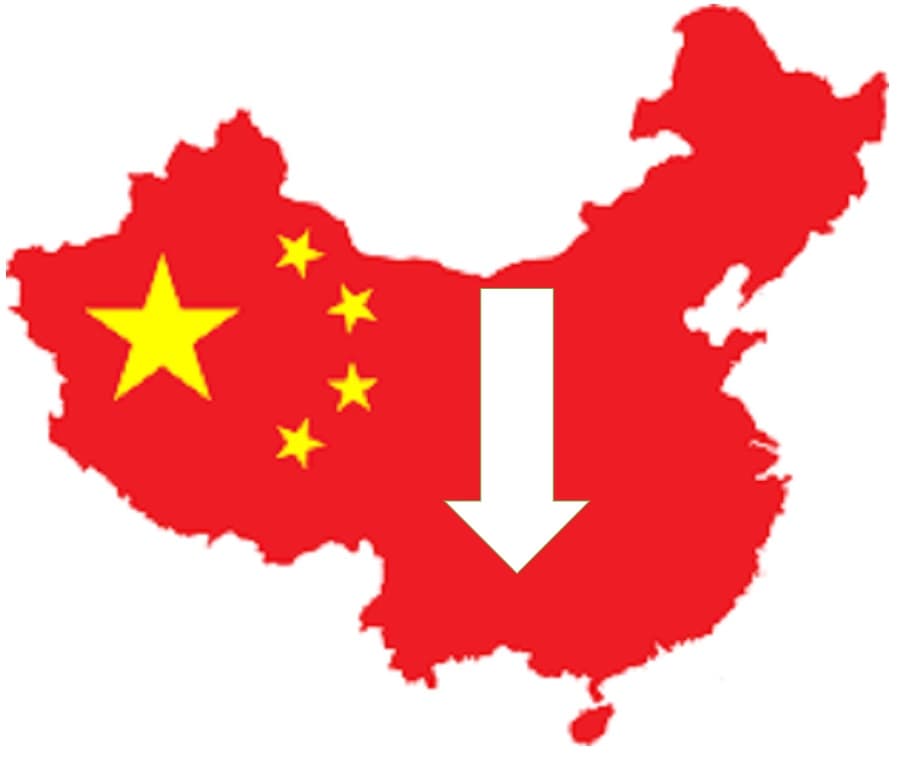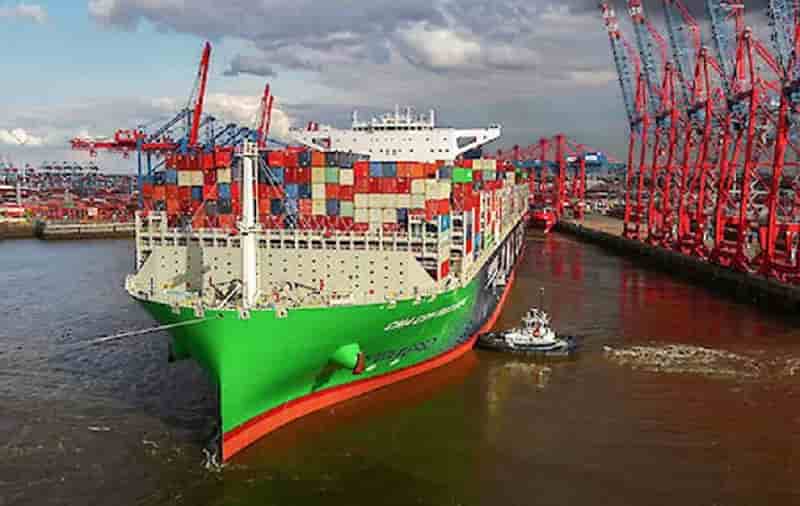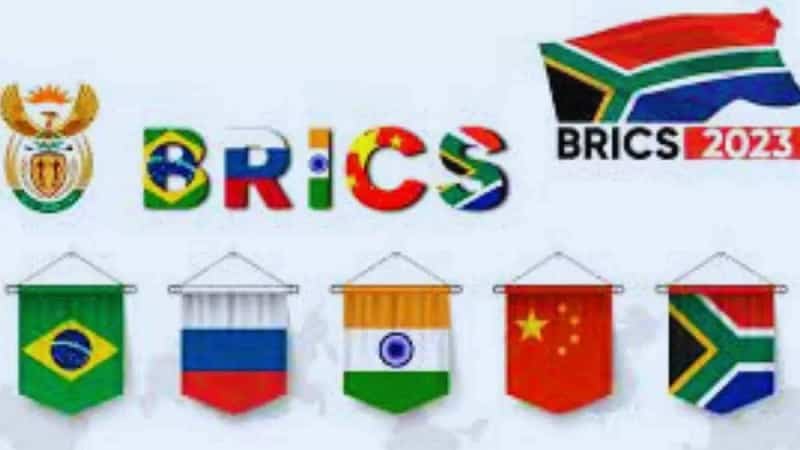Bottle to Bottle China Economy – Is China’s Race Already Finished? 22-08-2023 - Arhive
Bottle to Bottle China Economy
Crude Oil Prices Trend

Crude Oil Prices Trend by Polyestertime
From the Jack Case to Covid: Unraveling the Series of Missteps that Paralyzed the Dragon Economy
The specter of turmoil looms large over the Chinese economic landscape, as two real estate behemoths, Evergrande and Country Garden, grapple with their staggering debt of 500 billion dollars. China finds itself ensnared in the throes of these profound challenges, reverberating beyond its borders. Emerging revelations about the crisis cast a gloomy shadow: the number of foreclosed properties auctioned under the Great Wall surged by nearly 20% annually, reaching 304,000 properties, with a substantial 179,000 houses, during the first half of 2023. This surge was a byproduct of the post-Covid economic deterioration and the mounting struggles in meeting mortgage obligations.
Amid the escalating concerns, speculations have emerged regarding the potential emergence of a new “Chinese Lehman Brothers,” reminiscent of the 2008 financial crisis. However, Xi Jinping’s party-state vehemently rejects this analogy, although there’s an acknowledgment that this ordeal won’t be easily overcome. Bottle to Bottle China Economy
Even James Galbraith, a prominent American economist, concurs with this perspective. In an op-ed for the South China Morning Post, Galbraith suggests that the portrayal of China’s decline is perhaps tailored to align with Western notions of capitalism and democracy’s triumph, particularly ahead of the 2024 US presidential elections. Nonetheless, a prevailing sentiment prevails that China’s predicaments transcend mere narrative, with the real estate turmoil representing just the tip of a much larger iceberg of accumulating challenges. This transpires at a juncture when China’s economic juggernaut has been steadily decelerating from its customary frenetic pace over the past two years, potentially failing to reach its 5% growth target this year.
The looming real estate bubble threatens to rupture, symbolizing a culmination of years of poor decisions. Among these, the zero-Covid policy assumes a significant role. Enforcing one of the world’s longest and strictest lockdowns spanning three years, this approach has severely weakened the economy. Bottle to Bottle China Economy
The repercussions are manifold: households and countless small businesses endured financial depletion, leading to diminished savings that translated into sluggish consumer spending and deflation. Disturbingly, youth unemployment spiked to 21.3% in June, a statistic China opted not to release for July. The ongoing struggle for employment among the younger population, compounded by historically low fertility rates of 1.09 children per woman (even worse than Italy’s 1.25), underscores the regime’s inability to reverse these concerning trends. This demographic predicament intertwines with the real estate sector’s woes, casting a foreboding shadow on a sector that accounts for 20 to 30% of China’s GDP. The shrinking pool of young individuals capable of driving a comprehensive renewal of the real estate cycle poses a formidable challenge.
Furthermore, the heavy-handed crackdown on technology corporations, which commenced in November 2020 with the suspension of Ant Group’s initial public offering, has marred China’s global image. Ant Group, a subsidiary of Alibaba and the world’s largest payment platform via Alipay, was poised for a record-breaking $34.5 billion IPO.
Yet, in a punitive move targeting Alibaba’s founder, Jack Ma, the party abruptly halted the IPO, rendering the emblematic figure of China’s technological surge absent for months. In a recent development, Ma relinquished control of Ant Group. Bottle to Bottle China Economy
The regulatory onslaught extended to other tech giants like Didi Global and Tencent, yielding a resurgence of dirigisme. These actions reverberated in the stock market, with Hong Kong’s Hang Seng index plummeting 38% from its April 2019 peak and the Csi 300 index, encompassing the highest-capitalization stocks from the Shenzen and Shanghai Stock Exchanges, declining 27% from its 2021 zenith.
Further complicating matters, China’s unwavering alliance with Russia’s Vladimir Putin, military exercises surrounding Taiwan, and escalating trade tensions with the United States compound the intricate web of challenges. Indicators signaling a shifting breeze are evident, including a 4% decline in direct foreign investments during the first seven months of 2023. Exports also suffered a sharp contraction, plummeting by 14.5% in July year-on-year.
In essence, the current conundrum facing China’s economy is a culmination of a series of ill-fated decisions. From a protracted zero-Covid policy with far-reaching economic repercussions, a demographic crisis exacerbated by employment woes, and a heavy-handed crackdown on technology giants, to geopolitical tensions and deteriorating trade metrics, these multifaceted challenges are undermining China’s economic vitality. As China grapples with its complexities, global eyes remain fixed on its path to recovery and how it navigates the intricate labyrinth of crises that have encircled its once unstoppable economic engine. Bottle to Bottle China Economy

How to Extrusion Blow Mold PHA/PLA Blends
You need to pay attention to the inherent characteristics of biopolymers PHA/PLA materials when setting process parameters to realize better and more consistent outcomes.
In the current legislative climate of bans on petroleum-based plastics and consumer requests for sustainable alternatives, bioplastics offer a unique opportunity. In prior decades, there has been significant resistance to bioplastics because of cost as well as unique, and often difficult, processing characteristics. Now, however, the development of many polyhydroxyalkanoate (PHA)-based resins — often combined with polylactic acid (PLA) — has resulted in bioplastic solutions that are well suited to current market needs.
PHAs are a naturally occurring biodegradable material produced via bacterial fermentation, similar to brewing alcohol. During fermentation, when nutrients and food sources are optimized, the bacterial strains start making and storing PHA as a food source, eventually producing a peak amount of PHA. Bottle to Bottle China Economy
At this point, the PHA is separated from the cellular components and processed, resulting in a light, white powder that can be combined with other materials like PLA to produce processable and usable bioplastic resins. These materials are typically compostable in home and industrial environments, and degradable in soil and marine environments.
One of the opportunities to use PHA and its compostable characteristics is in blow-molded articles. The positive end-of-life scenarios offer one possible solution to the overabundance of plastic in the market. PHA can be blow molded into various shapes, sizes and designs for many applications, from personal use to food and drink storage.
Recently, many processors have been experimenting with running PHA/PLA blends in their blow molding operations, with mixed success due to the blends’ unique characteristics. However, proper attention to the inherent characteristics of PHA/PLA materials when setting the processing parameters can lead to better and more consistent outcomes.
PHA can be blow molded molded into various shapes, sizes and designs for many applications.
When combining PHA with PLA, you will find that the processing requirements for the PHA will drive most of your processing strategies. PHA is hygroscopic and needs to be dry. It is sensitive to residence time and requires a warm (120-130°F) mold to crystallize.
At Danimer Scientific, most of our research effort has been with extrusion blow molding (EBM), which is the process covered here. Bottle to Bottle China Economy
Material Handling
As noted, PHA is a hygroscopic polyester that will absorb environmental moisture. Having the material dry before processing will prevent degradation and melt thinning. A moisture content of less than 0.04% (400 ppm) is required. Recommended drying conditions are four hours at no greater than 170°F (80°C) with a desiccant dryer.
Purging
It is recommended to purge the machine completely with LDPE to remove the previous resin and, after cooling the extruder to the process set points referenced below, introduce the PHA/PLA blend. This procedure should get you into the production material without degrading the resin. PHA/PLA blends have an upper temperature limit of around 400°F and will rapidly degrade around this temperature.
Because PHA can degrade quickly under heat and shear, it is recommended that you purge fresh material forward anytime the machine is idled for more than five minutes before starting up again. It is not only the temperature of the melt that matters but also the residence time. High residence times will cause the material viscosity to decrease and can cause problems with machine startup. Bottle to Bottle China Economy
At the end of production, the machine should again be purged clear of the PHA/PLA blend — using LDPE at process temperatures — before increasing temperatures to go to the next resin.

Thailand Unveils Groundbreaking Launch of 100% rPET Beverage Bottles
In a remarkable stride towards environmental sustainability, the dynamic collaboration between Alpla and PTT Global Chemical (GC) has heralded the introduction of Thailand’s inaugural food-grade rPET (recycled polyethylene terephthalate). This groundbreaking initiative has culminated in the creation of the nation’s foremost 100% rPET bottles, a pioneering achievement set to reshape the beverage industry landscape. Notably, esteemed beverage brands Pepsi and Mineré have embraced this innovative transformation by adopting Envicco’s cutting-edge PCR (post-consumer recycled) material for their PET bottles, thereby catapulting themselves into the vanguard of sustainable packaging.
The resounding success story unfolds against the backdrop of Alpla and PTT Global Chemical (GC) inaugurating a state-of-the-art recycling plant nestled in the heart of Rayong province in September 2022. Bottle to Bottle China Economy
A testament to their unwavering commitment to environmental preservation, the recycling plant is a symbol of their strategic partnership and shared vision for a greener future. Earning the coveted nod of approval from Thailand’s national FDA (Food and Drug Administration), the plant’s first-of-its-kind certification for food-grade rPET signified a triumphant milestone. This landmark certification paved the way for the monumental launch of the nation’s maiden 100% rPET bottles, underscoring the transformative potential of their partnership within Thailand’s burgeoning beverage industry.
Envicco, a trailblazer in its own right, has emerged as a pivotal player in this transformative narrative. Flaunting an impressive annual production capacity of 30,000 tonnes of rPET and 15,000 tonnes of recycled rHDPE (recycled high-density polyethylene), Envicco stands tall as one of Asia’s premier recycling powerhouses. Alpla, a staunch advocate for quality and efficiency, attests to the mechanical recycling process meeting rigorous standards in the domains of quality, safety, and production efficacy. The resultant material, aptly christened “Inno Eco,” was bestowed the FDA’s seal of approval prior to securing the endorsement of Thai regulatory authorities, a testament to its unwavering commitment to product excellence. Bottle to Bottle China Economy
Noteworthy as the product launches by Pepsi and Mineré are, their resonance extends far beyond mere commercial initiatives. These momentous launches are accompanied by expansive awareness campaigns geared towards galvanizing public participation in collection and recycling efforts. This multi-faceted endeavor seeks to empower and educate the Thai populace on the myriad benefits of embracing sustainable packaging solutions. Suntory PepsiCo Beverage Thailand has forged a synergistic partnership with the Property Management of Chulalongkorn University (PMCU) Bangkok, fostering the “Fizzy Consciousness to Change the World” campaign. On a parallel note, Nestlé has collaborated seamlessly with 7-Eleven, a prominent supermarket chain, and GC’s trailblazing waste management platform, Youturn, to amplify the message of sustainability through the “Bottle made from Bottles” campaign. Both initiatives encapsulate a harmonious fusion of corporate responsibility and civic awareness, echoing the urgency of collective action in preserving our planet for generations to come.
In essence, Thailand’s maiden foray into the realm of 100% rPET beverage bottles stands as an exemplar of collaboration, innovation, and ecological consciousness. Alpla and PTT Global Chemical’s symbiotic partnership, crystallized in the environmentally conscious precincts of their recycling plant, is rewriting the narrative of sustainability in the beverage industry. Bottle to Bottle China Economy
The inaugural food-grade rPET certification from the national FDA and the subsequent launch of the pioneering 100% rPET bottles mark a triumphant crescendo in this transformative journey. As the nation embraces these novel solutions, propelled by Pepsi and Mineré’s visionary adoption of Envicco’s PCR material, Thailand charts an audacious course towards a greener, more sustainable future.

Is China’s Race Already Finished? The Wall Street Journal’s Skepticism
The question looms large: has China’s relentless race toward exponential growth finally hit a wall? This query gains momentum through a meticulous analysis conducted by The Wall Street Journal, delving into the intricate folds of China’s economic model, which now seems to bear the fractures of strain.
For decades, China has been the exemplar of propellant growth, fueling its economy by channeling investments into sprawling factories, towering skyscrapers, and intricate networks of roads. This economic blueprint has shepherded an unprecedented epoch of expansion, rescuing the nation from the clutches of poverty and propelling it into the global spotlight as a formidable behemoth, with its exports permeating the farthest reaches of the world. The eloquent words of The Wall Street Journal encapsulate this narrative, stating, “What was effective during China’s pursuit to narrow the gap now reveals its limitations in a landscape where the nation is ensnared by a web of debt, and the canvas to construct is dwindling.” In essence, the bedrock that once served as a platform for China’s meteoric rise now appears shaky, and economists are grappling with the potential consequences. Bottle to Bottle China Economy
The crux of the matter lies in the transformation of China’s economic paradigm. The strategy that facilitated its ascent—marked by an unrelenting drive to bridge the developmental divide—seems to falter in the face of shifting realities. The nation, now laden with a mounting burden of debt and confronted with a dwindling repertoire of infrastructure projects, is caught in a perplexing quagmire. As The Wall Street Journal sagely reflects, “What seemed astute while China was in the throes of catching up loses its luster in a scenario where opportunities to construct dwindle, and the shadows of debt loom large.” The crux of this apprehension lies in the contemplation of whether China’s days of fervent growth are not merely numbered, but are reaching their final chapters.
The sobering reflections penned by The Wall Street Journal are tinged with a sense of concern, reflecting the musings of economists who fear that China’s narrative of slowing growth might take a dark turn into the realm of stagnation—eerily reminiscent of Japan’s protracted ordeal since the 1990s. An ominous parallel emerges: the bursting of Japan’s real estate bubble back then led to an enduring epoch of deflation, coupled with the shackles of limited expansion. Could China be marching down a parallel path, trapped within the quagmire of prolonged stagnation? Such a prospect sends shivers down the spines of economists and global observers alike. Bottle to Bottle China Economy
Beyond the contemplation of financial indices and economic indicators, a larger inquiry is at play: what would a plateauing China mean for the intricate web of global economic interdependence? The country’s rise to economic eminence has woven it into the very fabric of the global economy. A pause in its growth engine could reverberate far beyond its borders, potentially triggering a cascade of readjustments and recalibrations across the economic tapestry of the world.
In conclusion, The Wall Street Journal’s introspection into China’s economic trajectory raises pivotal questions about the sustainability of its relentless growth model. The spotlight is now on whether China’s economic landscape, once characterized by unbridled expansion, is undergoing an irrevocable metamorphosis. As the nation grapples with a looming specter of debt and diminishing avenues for infrastructural development, the era of sky-high growth might be hurtling toward its twilight. Economists’ apprehensions of a potential stagnation scenario, akin to Japan’s enduring quagmire, warrant serious contemplation. The globe watches with bated breath, as the trajectory of the world’s second-largest economy takes on new contours, potentially reshaping the dynamics of the global economic stage. Bottle to Bottle China Economy

The anticipation of a looming economic downturn in the United States has been bolstered by The Conference Board, an influential business membership and research organization situated in New York
According to their latest assessment, the Leading Economic Index (LEI) for the US endured a decline of 0.4 percent in July of the current year, settling at a reading of 105.8 on the index (2016=100). This downturn follows a prior drop of 0.7 percent in June. As a result of these concerning trends, The Conference Board has unveiled a projection that unveils the likelihood of a brief and relatively mild recession transpiring within the temporal confines of the fourth quarter of 2023 to the initial quarter of 2024.
Spanning the time interval between January and July, the LEI underwent a contraction of 4 percent. This deterioration in performance is a slight exacerbation of the 3.7 percent contraction that took place in the preceding half-year period, which spanned from July 2022 to January 2023. Providing insights into this prevailing economic landscape, Justyna Zabinska-La Monica, the Senior Manager of Business Cycle Indicators at The Conference Board, emphasized the recurrent decline in the US LEI, stretching across sixteen consecutive months as of July.
This continuous slump serves as a telling indicator of the heightened uncertainty that shrouds the nation’s economic outlook. Bottle to Bottle China Economy
Conversely, The Conference Board’s Coincident Index (CEI), responsible for tracking current economic activity, presents a more nuanced perspective. Zabinska-La Monica outlined that, although the CEI has exhibited gradual growth, it has done so unevenly. In the last half-year period, three months saw no alteration in the index’s values, while the remaining three experienced an increase. This mixed pattern in the CEI indicates an existing environment of favorable growth, albeit one marked by inconsistencies and fluctuations.
July brought forth an array of contributing factors to the decline observed in the Leading Economic Index. Weakness in new orders, coupled with elevated interest rates and a dip in consumer confidence regarding the business conditions outlook, combined to amplify the index’s downturn. Additionally, a reduction in the number of hours worked in the manufacturing sector further accentuated the 0.4 percent decline in the LEI during this period. Bottle to Bottle China Economy
Piecing together these indicators and observations, The Conference Board’s assessment retains a cautious tone. The LEI’s continued downward trajectory suggests an impending deceleration in economic activity, with the possibility of transitioning into a phase of mild contraction in the coming months. This assessment has culminated in The Conference Board’s projection of a concise and relatively moderate recession. The timeframe under consideration for this economic downturn spans from the final quarter of 2023 through to the initial quarter of 2024.
As economies continue to navigate intricate webs of interconnected factors, the insights provided by The Conference Board prompt both businesses and individuals to prepare for potential economic headwinds. The interplay between indices, indicators, and external influences underscores the need for adaptable strategies that can weather the challenges posed by economic fluctuations.
While the precise extent of the impending recession remains uncertain, proactive measures guided by timely insights could mitigate the potential adverse effects and lay the groundwork for a more resilient economic future. Bottle to Bottle China Economy

Laser, ultrasonic cutters lower polyester microfibre release: Study
INSIGHTS
- Using laser and ultrasonic cutters on polyester knitted fabrics can significantly reduce the amount of microfibres released into the environment during laundry, according to new research conducted in south India.
- The type of stitch and the needle count used during garment production both play a role in reducing microfibre release when polyester clothes are washed.
Using laser and ultrasonic cutters on polyester knitted fabrics—instead of traditional cut-and-sew methods—can significantly reduce the amount of microfibres released into the environment during laundry, according to new research conducted in south India.
The analysis of different cutting methods by R Rathinamoorthy from the department of fashion technology at the PSG College of Technology in Coimbatore and S Raja Balasaraswathi from the National Institute of Fashion Technology in Bengaluru showed that laser and ultrasonic cutting methods reduce the microfibre release by up to a twentieth compared to conventional scissor-cut edges. Bottle to Bottle China Economy
While comparing the different stitch types, the overlock stitch type showed reduced shedding than the other stitch types (flatlock stitch and single needle lockstitch).
The results showed that the use of more needles increases the microfibre emission among different stitch variations of the same stitch type, the researchers mentioned in a peer-reviewed paper in the August 11 issue of the Elsevier journal ‘The Science of the Total Environment’.
For instance, a 45.27 per cent increase in microfibre emission was reported with the four-thread overlock stitch (two needles) than with the three-thread stitch (one needle), they wrote. Bottle to Bottle China Economy
Regarding seam type, the proposed edge finishing seam (EFb) was effective in reducing 93 per cent of microfibre release as the edges are completely covered.
When the effect of stitch density is considered, in the case of single needle lockstitch and flatlock stitch, the microfibre release is reduced with increased stitch density.
The results confirmed that a proper selection of stitch, stitch density, and seam type would reduce the microfibre release from a garment by up to 64.6 per cent.

The Significance of the BRICS Summit for India
The upcoming 15th BRICS summit, scheduled to take place from August 22nd to 24th in South Africa, carries substantial importance for India on both a domestic and global scale. With a vision to fortify and reform the multilateral system, Prime Minister Narendra Modi views this event as a crucial opportunity. To comprehend the significance of the BRICS summit for India, it’s essential to delve into the origin and relevance of BRICS on a global level and its implications for India. Bottle to Bottle China Economy
The BRICS summit is a pivotal gathering that holds profound significance not only for India but also for the global community. Back in 2001, the term BRIC was coined by British Economist Jim O’Neill, referring to the emerging economies of Brazil, Russia, India, and China. It wasn’t until 2006, during the inaugural meeting of BRIC Foreign Ministers in New York, that the group’s formal establishment occurred. Subsequently, the first BRIC Summit convened in June 2009 in Yekaterinburg, Russia.
Prior to delving into BRICS’ importance for India, it’s crucial to acknowledge the global relevance of the BRICS summit. Collectively, the BRICS nations constitute a staggering 42 percent of the world’s population. Moreover, their combined economies contribute to one-third of the global GDP and hold a 17 percent share of global trade. These substantial contributions in trade, investment, and economic growth establish BRICS as a fundamental pillar in the global order. Bottle to Bottle China Economy
Another crucial aspect is global security. Amid the backdrop of the United States’ unilateral withdrawal from the Intermediate-Range Nuclear Forces (INF) treaty and the destabilizing consequences of events like the Iran deal, BRICS has the potential to play a vital role in ensuring global peace. By engaging in dispute resolution based on principles of fairness, BRICS could contribute significantly to global stability.
From an economic standpoint, the aftermath of the 2008 global financial crisis and the emergence of new threats due to unilateral economic sanctions and trade wars have disrupted the world economy. In response, BRICS has played a substantial role in supporting the global economy. Additionally, it has strengthened economic ties among BRICS nations and other Emerging Market and Developing Countries (EMDCs), opening avenues for inclusive and sustainable development. Bottle to Bottle China Economy
Why is BRICS important for India? The current geopolitical landscape is marked by intricate power dynamics, leaving India straddling a delicate line between balancing the strategic interests of the United States and navigating the Russia-China equation. The BRICS platform provides a golden opportunity for India to navigate this challenging landscape and maintain equilibrium within the Russia-China axis.
Furthermore, the BRICS nations share a common goal of reforming the international financial and monetary systems, aiming to create a more balanced global order. Consequently, the BRICS community plays a pivotal role in the G20 by advocating for financial stability and reforms. Bottle to Bottle China Economy
Undoubtedly, the global issue of terrorism remains a pressing concern. BRICS offers India a robust platform to address this problem head-on. Within the group, India has actively pursued a steadfast stance against terrorism, initiating focused consultations on specific components and aspects of this global menace.
As the BRICS Summit 2023 approaches, its significance for India grows even more pronounced. The summit will delve into highly contentious and essential matters, including the potential expansion of BRICS through the inclusion of new members. Discussions will encompass guiding principles and admission criteria, further shaping the trajectory of this influential international grouping.
In conclusion, the BRICS summit holds substantial importance for India, spanning both the global and domestic dimensions. Its capacity to offer India a platform for strategic balancing, international financial reform, counter-terrorism efforts, and participation in crucial discussions positions it as a pivotal event in India’s diplomatic and economic endeavors.

Petrochemicals rPET China Economy – 21-08-2023
Bottle to Bottle China Economy
